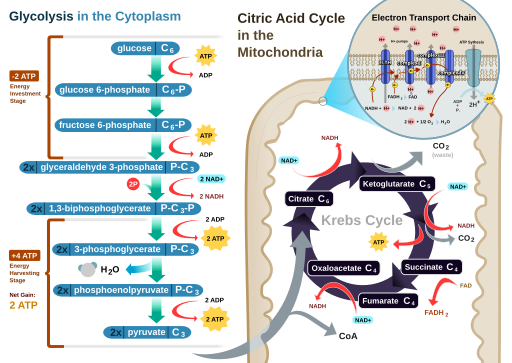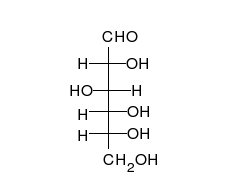
Contents
Glycolysis
Glucose is the preferred carbohydrate of cells. Glycolysis (glyco – sugar; lysis – splitting) is a universal process of all cells that occurs in the cytosol whereby the glucose (a 6-carbon sugar) is split into two pyruvate (a 3-carbon molecule) molecules to generate ATP and reduced NADH. ATP (adenosine triphosphate) is the energy currency of the cell that stores chemical energy in 3 high energy phosphate bonds. NADH (reduced nicotinamide adenine dinucleotide) is a high energy electron carrier that acts as a coenzyme in reactions and as a rechargeable battery of sorts. The uncharged state that is not carrying high energy electrons is called NAD+.
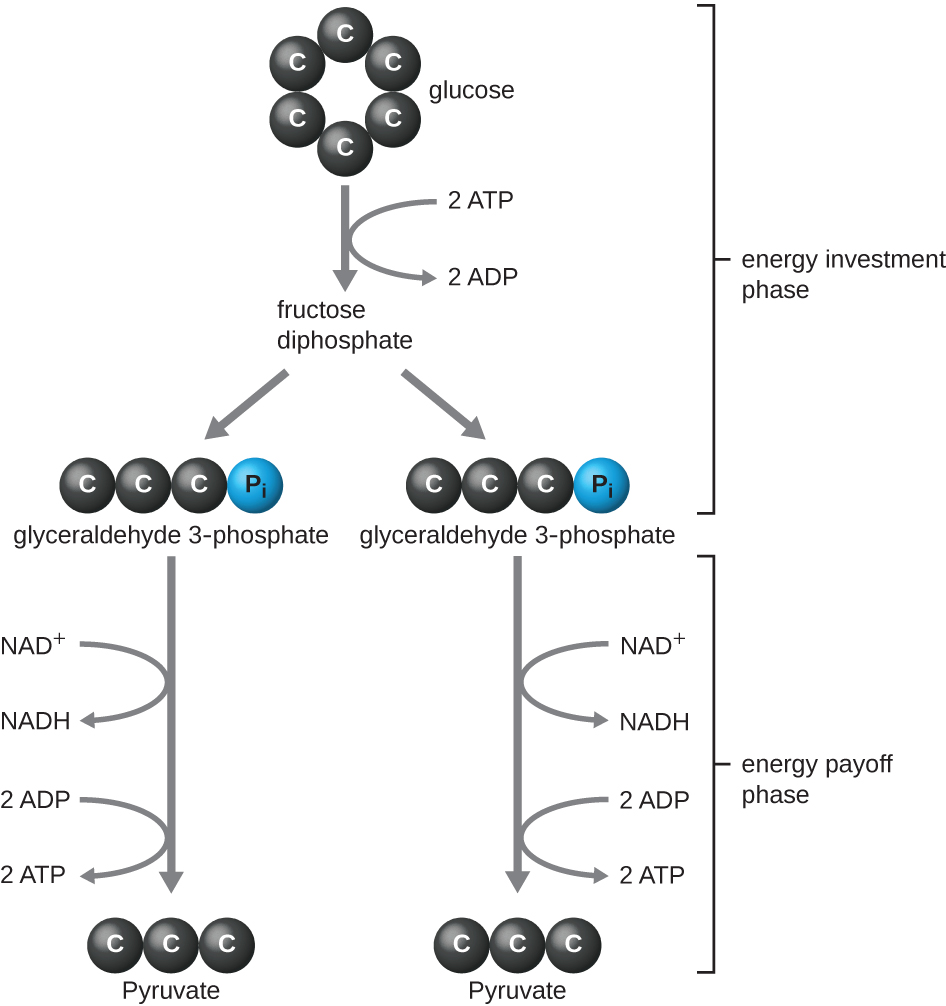


Fermentation
In the absence of oxygen, cells may decide to utilize the pyruvate from glycolysis to rapidly generate additional ATP molecules in a process called fermentation. Fermentation is the anaerobic process of reducing pyruvate to generate ATP. This process uses the NADH generated from glycolysis as the reducing agents. Fermentation is a familiar process that occurs in yeast to generate ethanol. In other organisms, like humans, fermentation results in the production of lactic acid. Both lactic acid and ethanol are toxic, but this aids the cells in generating ATP when energy is required rapidly. Fermentation also generates CO2 as a waste molecule as pyruvate is broken down into a 2-carbon compound.
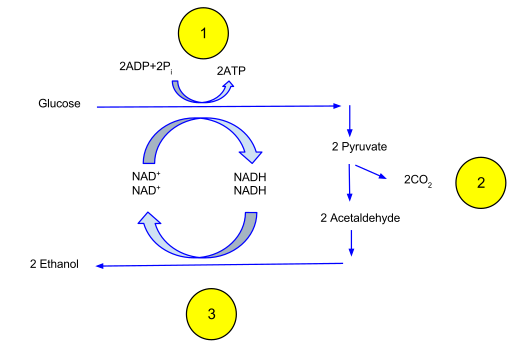
The Preparatory Reaction
In the presence of O2, aerobic organisms will use a reaction of pyruvate decarboxylation in the cytosol. This reaction generates a molecule of Acetyl-CoA from the Coenzyme A which can enter the mitochondria.
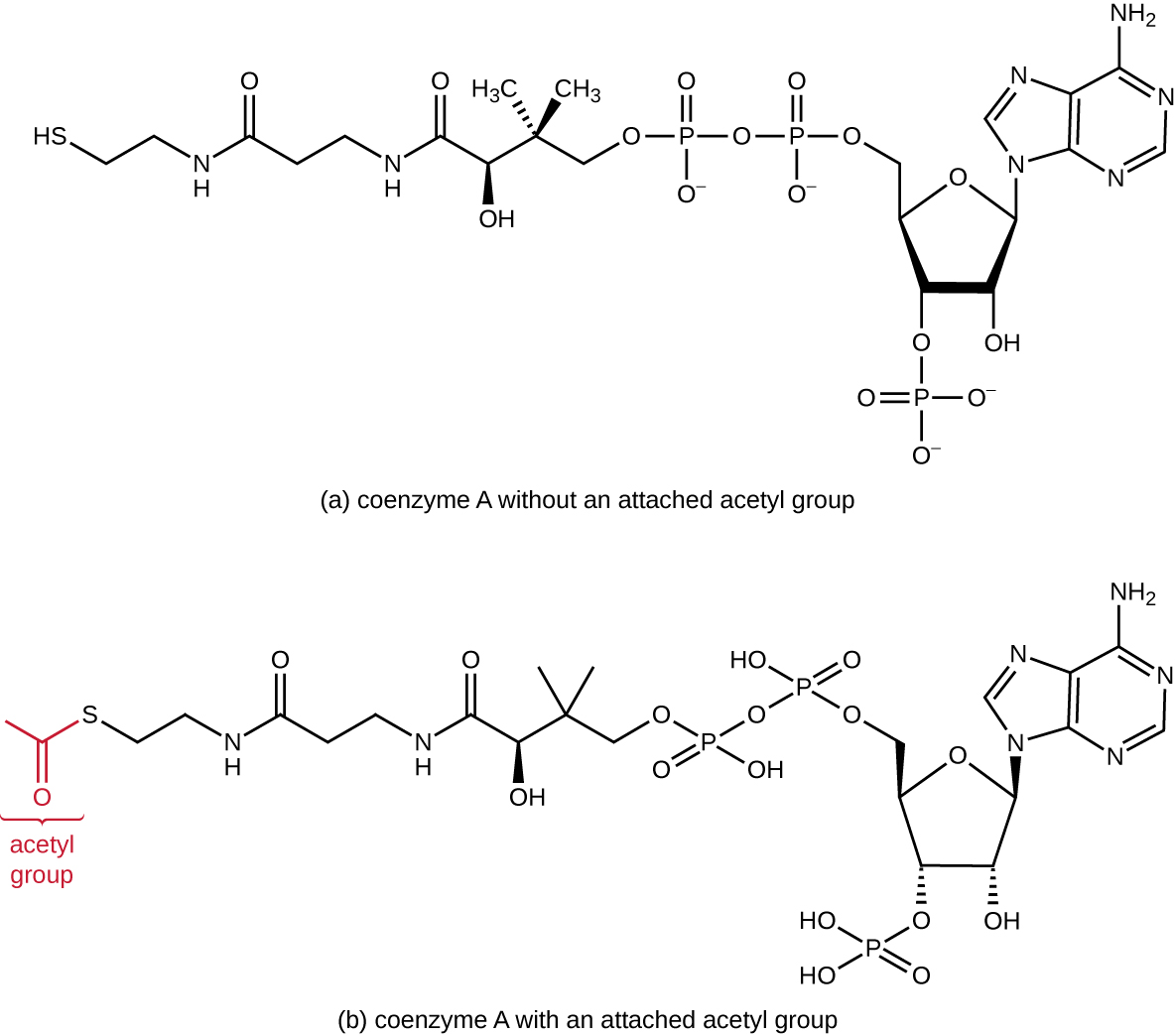
Mitochondria
Mitochondria are the power station of eukaryotic cells. They are derived from a process described by the endosymbiotic theory whereby aerobic prokaryotes were engulfed by a protoeukaryote. In this mutualistic arrangement, the prokaryote detoxified the deadly O2 gas in the environment and used it to fully break down glucose to yield many ATP molecules. Evidence for this theory comes from the independent replication of the mitochondria, the bacterial-like mitochondrial DNA, the bacterial-like mitochondrial ribosomes, the bacterial lipids found in the inner membrane and the eukaryotic nature of the outer membrane. Mitochondria are genomically similar to bacteria of the order Rickettsiales. Some bacteria of this order are still free-living and some are intracellular pathogens.
Aerobic Respiration
